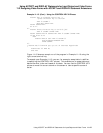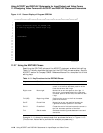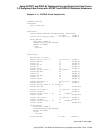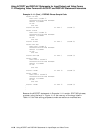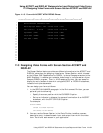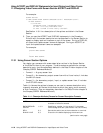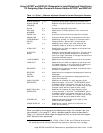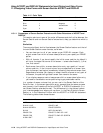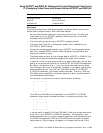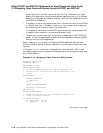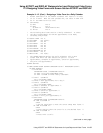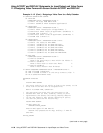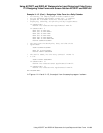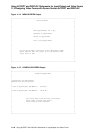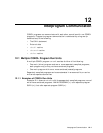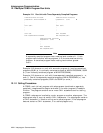
Using ACCEPT and DISPLAY Statements for Input/Output and Video Forms
11.3 Designing Video Forms with Screen Section ACCEPT and DISPLAY
Screen Section Clause ACCEPT or DISPLAY Clause with Equivalent Effect
REVERSE-VIDEO REVERSED
SECURE WITH NO ECHO
UNDERLINE UNDERLINED
Differences
There are also significant differences between the Screen Section and the non-
Screen Section screen formats. With the Screen Section:
• You can define screen items that wrap onto multiple lines. The editing of
these fields during an ACCEPT operation differs from that of the other
extended formats of ACCEPT.
• The use of editing keys during an ACCEPT is always allowed.
• The size of each field (for an elementary screen item) is defined by the
PICTURE or VALUE clause.
• Conversion is always performed during an ACCEPT; as the operator leaves
each field, Compaq COBOL performs field validation and conversion and
displays the resulting value.
• The screen does not scroll during a Screen Section ACCEPT or DISPLAY. Any
fields that are positioned beyond the edge of the screen are truncated.
• In addition to the line and column position for each screen item, you can also
specify a line and column position for the ACCEPT and DISPLAY statements.
By default, this position is at (1,1), so your screen item positions are offset
from the upper left corner of the screen. However, if you specify new starting
screen coordinates with the LINE and COLUMN options of the ACCEPT
or DISPLAY statement, you thereby resize the screen. Then any LINE and
COLUMN options specified in the screen description entry are positioned for
the resized screen coordinates.
For example, if you picture the usual terminal screen as follows:
+---------------+
||
||
||
||
||
+---------------+
the LINE and COLUMN values specified in the ACCEPT or DISPLAY
statement might resize the screen as shown in the following interior box:
+---------------+
||
| +-----------+
|| |
|| |
|| |
+---+-----------+
It can be useful to specify LINE and COLUMN in both your screen description
entry and in your ACCEPT or DISPLAY statement. For example, in your
screen description entry, you could create a legend box, and then specify with
the DISPLAY statement’s LINE and COLUMN options the starting screen
coordinates of (1,60) to display the legend in the upper right corner of the
Using ACCEPT and DISPLAY Statements for Input/Output and Video Forms 11–35



